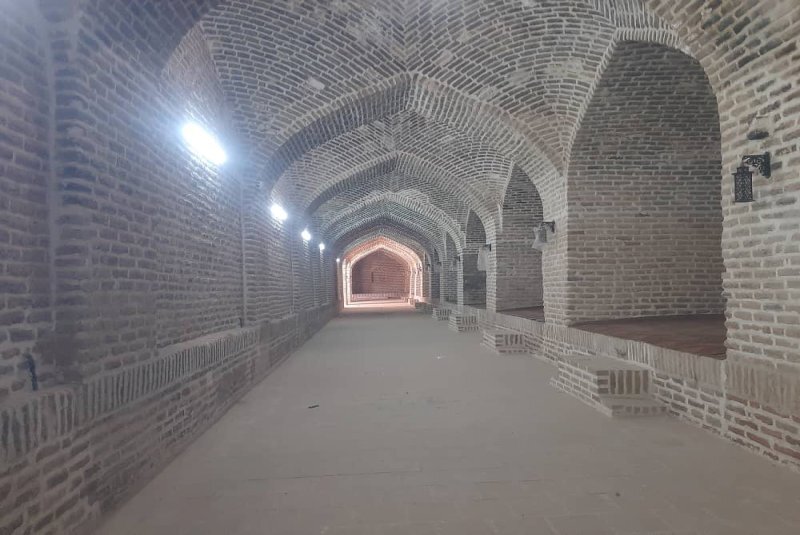INSUBCONTINENT EXCLUSIVE:
been carried out by the private sector, Ali Mohammadi said on Wednesday.The first phase of the project, which includes a traditional
restaurant and handicrafts market, is planned to be inaugurated within the next week, the official added.Located in the historical core of
the city and close to its traditional markets, the revival of this historical monument will contribute greatly to preserving and restoring
other historical works in the city, he mentioned.So far 450 historical structures have been identified in Torbat-e Heydarieh -located 180
kilometers from the provincial capital of Mashhad- of which 80 properties have been inscribed on the national heritage list.Over the past
couple of years, Torbat-e Heydarieh and its surroundings have yielded traces of the ancient settlements
Last year, an archaeological site was exposed on the outskirts of Torbat-e Heydarieh after torrential rains washed the soil away
The site is estimated to date back to the early and middle Islamic eras, according to preliminary studies carried out by cultural heritage
experts.According to archaeological studies, Torbat-e Heydarieh is home to several historical caves due to its favorable habitat conditions
and traces of habitation from about 40,000 years have been identified in the caves of the region
The history of the area stretches back to the Achaemenian Empire from the 6th to 4th century BC and the Parthian Empire from the 3rd century
BC to the 3rd century CE.Possible UNESCO tag for Iranian caravanseraisIran has put forward a selection of 56 caravansaries as a candidate
a selection of its historical caravanserais for a possible inscription on the UNESCO World Heritage list
In this regard, cultural heritage experts are assessing such monuments that are scattered across the country to make a shortlist in terms of
their architecture as well as historical and cultural values.Caravansary (also Caravanserai or Caravansaray) is a building that served as
the inn of the Orient, providing accommodation for commercial, pilgrim, postal, and especially official travelers.According to Encyclopedia
Iranica, from the number of surviving caravansaries and their sizes, it is clear that in Safavid and Qajar times there was a state
architectural department that was specifically concerned with the construction of caravansaries and stations on the overland routes
Furthermore, in the cities, several caravansaries were erected as lodging houses, depots, and commercial offices in the vicinity of the
bazaars.A typical caravansary consists of a square or rectangular plan centered around a courtyard with only one entrance and arrangements
Whether fortified or not, it at least provided security against beasts of prey and attacks by brigands.The earliest caravanserais in Iran
were built during the Achaemenid era (550 - 330 BC)
country.For many travelers, staying in or even visiting a centuries-old caravanserai can be a wide experience; they have an opportunity to
feel the past, a time travel back to a forgotten age.Such roadside inns were once constructed along ancient caravan routes in the Muslim
world to shelter people, their goods, and animals
The former Silk Roads may be the most famous example dotted by caravanserais.Cozy chambers that are meticulously laid out around a vast
courtyard may easily evoke spirits of the past
camels chewing hay! You can also conceive the idea of local architectural style and material in its heyday.It is not hard to fancy the
hustle and bustle of merchants bargaining on prices, recounting their arduous journeys to one another while their camels chewing hay!Passing
major roads in the country, one may see crumbling caravanserais, many of which were abandoned for ages
In the Information Age, such guest houses have largely lost their actual usage.However, a couple of years ago, the Iran tourism ministry
introduced a scheme to keep them alive and profitable; tens of caravanserais are ceded to private investors for better maintenance
Now, some are exclusively renovated and repurposed into boutique hotels and tourist lodgings.They often had massive portals supported by
elevated load-bearing walls
Guest rooms were constructed around the courtyard and stables behind them with doors in the corners of the yard.ABU/MG

